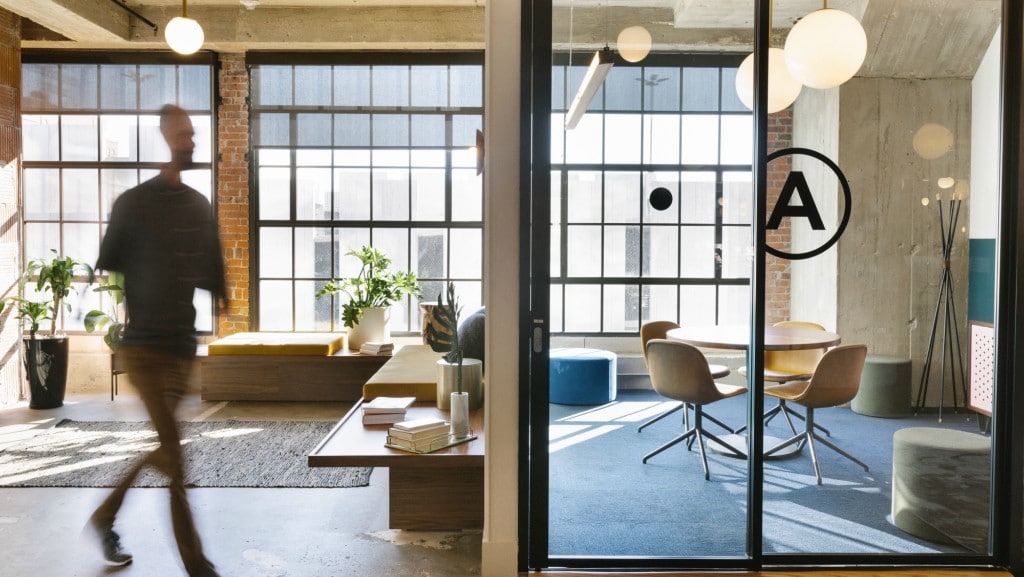Reading time: 7 minutes
It has become clear, in the past few years at least, that the open-concept office layout isn’t working, especially for start-ups. The end goal of the design was to encourage employees to solve more problems, become more creative, and perform more productively at work. These are all necessary requirements to stay agile and ahead of the competition in the early days of a business. In truth, open offices actually hinder all of these, including collaboration which meant to increase dramatically once workers were freed of cubicles. What started out as a noble endeavour to knock down walls and flatten hierarchies in actuality is hated by employees. Open concept offices are loud, distracting, and offer little to no privacy.
The problem with open-concept office spaces is that they often feel more like factories than work environments. And start-ups are finding that to keep employees happy they need to re-think how to approach where and how employees work.
Co-working spaces offer an alternative
Co-working spaces have begun to crop up globally and with regularity in most urban centres and they may be the cure to open-concept office fatigue. In this model, a plethora of companies share one main office space. The companies pay per seat, or office, and share communal costs that are built into their rental or lease agreement. The added bonus: signing a multi-year lease with a building management company is becoming a thing of the past. Many co-working spaces offer flexible short-term contracts. Staff are also on-site to help or troubleshoot. It has quickly become the perfect solution for early-stage businesses working within tight budgets that are looking to reduce overhead.
Instead of adhering to a specific space and covering all the bills, a start-up can try out a co-working plan on a limited run. They can then decide on the fly to scale up or down, according to their needs. Have a new hire? Simply rent one more desk space. Need more privacy? Level up with private office space or have a mix of private office/hot-desk seating. The traditional concept of office space has become extremely fluid and modular.
Physical Space Without the Headaches
The importance of maintaining a physical space, especially in major cities, continues to be important for many organizations. A large majority of businesses still need a home base for everything from housing employees to running meetings to receiving mail.
But how much space does a growing company need, really? And why pay for expensive real estate when the money can be better spent on strategic hires, fundraising, marketing initiatives, and product development?
The reality is, modern growth-stage companies need just enough strategic real estate for their team, with the flexibility to scale. They still, incidentally, crave the privacy and freedom a traditional office provides. They want to feel ownership over the place they are in. And it needs to reflect their company and be welcoming to clients.
Many co-working spaces are becoming receptive to these necessities by taking the traditional office model and injecting it with the best parts of co-working. It’s sort of a hybrid solution that maintains both structure and flexibility.
Re-imagining the Office Environment
A good example of this in Toronto is WeWork. The original location at 240 Richmond St W has since expanded to include 8 more locations around the downtown core. These central locations would normally be well out of the budget for most start-ups, but private office space at one of WeWork’s facilities comes in at just over $1000 a month. That’s a pretty great deal for 24/7 access, daily cleaning, IT support and free micro-roasted coffee.
While WeWork does offer the typical, shared workspace for those simply looking for a satellite desk, they’ve taken bigger corporates into consideration too. Spaces are built to accommodate private offices of varying sizes. These range from small office suites to headquarters options that can house 250+ employees. In fact, WeWork in the USA runs Amazon’s office in Boston and an entire building for IBM in New York. WeWork has been so successful with their own model, they’re even changing how traditional corporates are approaching their office space. It seems even the bigger players are catching onto something that’s been trending with start-ups for a while now.
Creativity, Communication and Collaboration are back on the Table
Approaches to typical work structures are shifting just as quickly as office layouts. Start-ups have been first to the trend. Originally embraced as cost-saving, employees have fully embraced the difference a co-working space can make. The changing nature of the office has also, in turn, made work more flexible, open, and collaborative. Harvard Business Review also discovered that people who work from co-working spaces perceive their output as more meaningful.
This may be due to the fact that modern workers crave accomplishing daily tasks with autonomy. Not only is the traditional open-concept office distracting, but it’s also constricting for employees. Thanks to laptops, workers have more mobility and less need for a home base. No longer do they want or expect a designated desk – cubicle or otherwise. Employees also want the freedom to move throughout the day, from desks to common areas to private rooms that allow them to focus and concentrate. Employees are embracing these flexible working environments and it’s making them more efficient because it allows them to gauge their needs minute by minute and adjust for them.
WeWork is designed to accommodate this new type of paradigm. It’s also magnified everything the open-concept workspace was meant to spark. The flexible working environment created at co-working spaces like WeWork has helped encourage creativity and collaboration. Co-working spaces like it have also become the nexus of information sharing and networking. With more companies housed under one roof, there’s also greater opportunity for individual professional growth and for start-ups to collectively mine leads.
To encourage networking between companies, WeWork offers various extras from lunch and learns to office hours with industry leaders. That’s on top of other events hosted in a space. These events have been successful largely because the company focuses on making the community a pillar in the company’s overarching cultural narrative. Start-ups based at WeWork facilities are now constantly exposed to new ideas and networking opportunities, simply by sharing an address with other exciting companies.
Massive Up-side
Perks come with the office too. There are wellness initiatives, communal areas, free refreshments, and on-site staff dedicated to helping start-ups maintain their productivity without having to sweat the details. Printers are on every floor and office supplies are on hand. Phone booths are available for private calls. Mail and package handling are also taken care of. Basically, anything needed to get through a business day is at an organization’s fingertips, no matter what its size or scale. These extras are particularly useful to a new company that may not have the budget for industrial printers or a receptionist.
Money is saved, and yet teams have more time to be more creative, have the space they need to communicate more effectively, and the tools at their disposal to become better at every aspect of their professional life. This, without feeling as if they are crammed shoulder to shoulder with colleagues. And all this with the added bonus of lightning-fast Wi-Fi, comfy couches, and communal kitchens.
WeWork has somehow made coming to work feel cool.

WeWork Conference Room @WeWork
If you’re a start-up crunching numbers, co-working spaces just make sense. They’re efficient, cost-saving, and a natural networking catalyst. Best of all, they’re able to grow with you. You could rent a floor of a building at a premium (plus the added cost of furnishings), or you could rent exactly what you need in a central location for a fraction of the cost. Your company budget will be happy, and so will your employees. Everyone will have access to flexible spaces that fit with their work style, while simultaneously fulfilling a business’s core needs.
As it turns out, the modular office is quickly becoming the new normal.
Like what you see? Sign up for our newsletter to get more great content, including ways to help your company find growth capital or how to manage your next SR&ED submissions. We’re here to help you find venture debt to suit your needs. Let us show you how.




